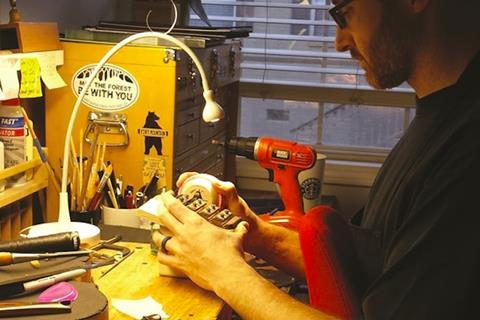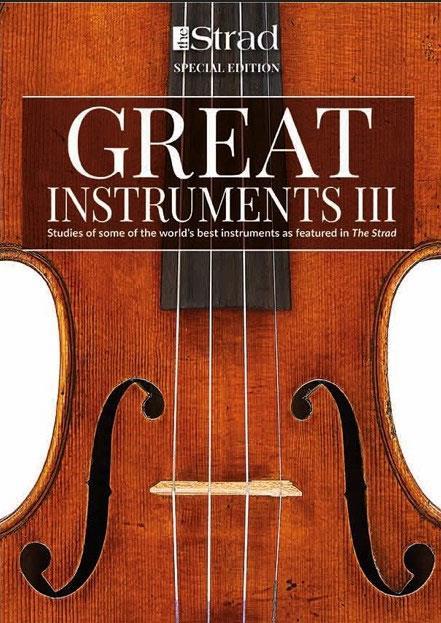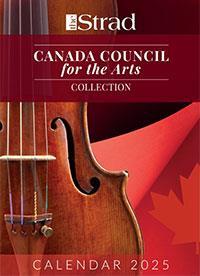For instrument makers, repetitive strain injuries can mean untold pain and misery – and possibly the end of their career. Luthier Cameron Robertson explains how, with the help of occupational therapist Sara Propes, he adapted his work process to guard against the problems of RSI in the future
The following is an extract from The Strad’s Luthiers and RSI feature in our May 2020 issue.
Discover more lutherie articles here
This is a snapshot of what we did for my personal situation:
Workbench. The workbench is a critical tool that dictates a lot about how we work. A raised surface helps to bring the work piece up to the eyes, instead of hunching over to see, which supports good posture. By building risers and jigs to make the work higher and more slanted, it reduced the flexion of my neck and reduced eye strain.
In the below picture you see an example of a position that is conducive to good posture, with neutral neck position and shoulders down. The plate is also easy to see, which leads us to the lighting. You may notice there is a fluorescent light to diffuse the area with light. However, the position of the lighting is incorrect and does not use this modification effectively.

Lighting. This can help or hinder performance. Lighting can cast shadows and glare, making work more challenging. Indirect flood lighting is best for general use, while direct light should be used for specific tasks such as arch shaping. Again it helps to support good posture and reduce eye strain. To correct the lighting in the above picture, the fluorescent light was moved to be positioned more above the head. Recommended placement for lighting is within 15 degrees of the line of vision, ideally behind the head.
Seating. This is very important for comfort, support, posture and positioning while at the bench. An expensive seat does not mean you are using good posture, as I learnt (see below).
Shop layout. How tools are positioned in relation to your body and workbench. Does it minimise bending and awkward body positions to get tools or accomplish tasks?
Technology. Do you (or can you) use different technology, both high- and low-tech, to support your performance? This may include jigs, risers, slant boards, ball vices, a Roman workbench, tablets, computers, CNC machines and optics as a few examples. Correct use of technology can greatly enhance your work, while misuse can be detrimental. For instance, misusing magnification systems, such as reading glasses or jewellers’ loupes can result in increased risk of injury and aggravating MSDs.
Tool Modification. Modifying tools is one of the easiest and most immediately beneficial changes that can be made. I was so proud of my beautiful, polished smooth knife handles that were thin, small and hard to hold. Built-up handles with padded grips are easier to hold, decreasing the amount of force necessary to use and control a tool. They are less fatiguing and reduce stress on joints. There are a vast number of materials that can be used, including leather, cork, tennis grips and density foam to build up handles. Increased grip can also come from use of padded gloves, and adhesive-backed sandpaper on slick metal tools. These can be used in conjunction with each other.
Person We examined many of the elements of my personal make-up such as: anatomy and previous injury; posture, positioning and body awareness; thoughts and mentality; training (habits and routines); values and mental flexibility.
Read: Bridge acoustics: the invisible bridge
Read: Trade Secrets: Creating neck graft sockets – part two
Discover more lutherie articles here
An exclusive range of instrument making posters, books, calendars and information products published by and directly for sale from The Strad.
The Strad’s exclusive instrument posters, most with actual-size photos depicting every nuance of the instrument. Our posters are used by luthiers across the world as models for their own instruments, thanks to the detailed outlines and measurements on the back.
This third volume in The Strad's Great Instruments series brings together the finest scholarship, research and analysis by some of the world’s leading experts on stringed instruments.
The Canada Council of the Arts’ Musical Instrument Bank is 40 years old in 2025. This year’s calendar celebrates some its treasures, including four instruments by Antonio Stradivari and priceless works by Montagnana, Gagliano, Pressenda and David Tecchler.













































No comments yet